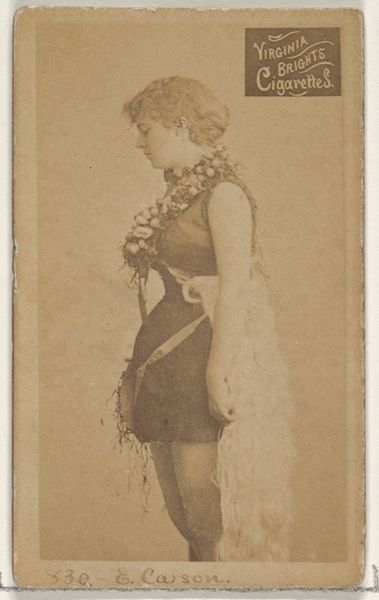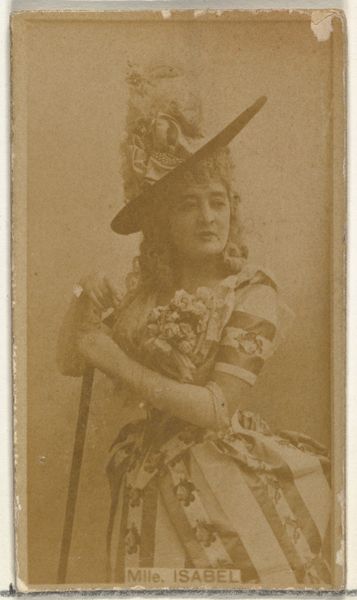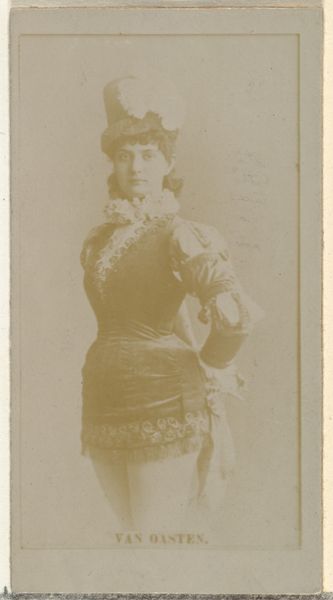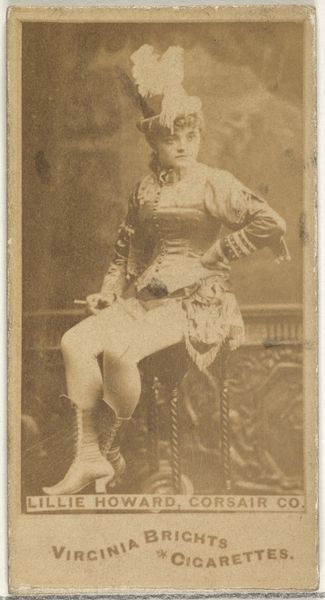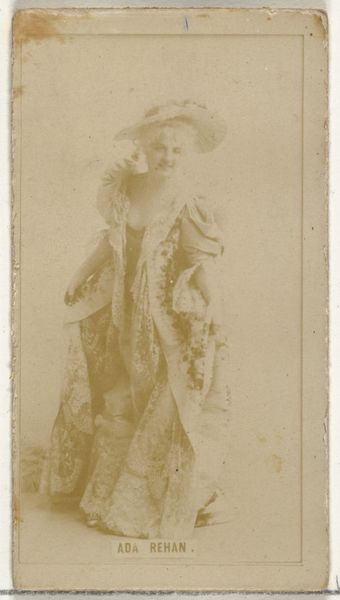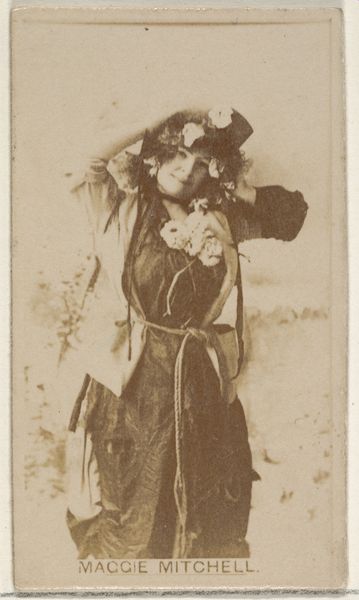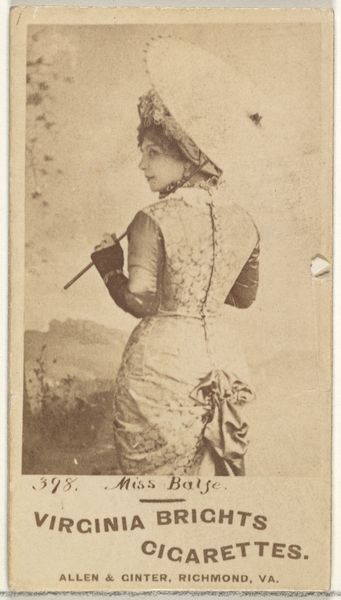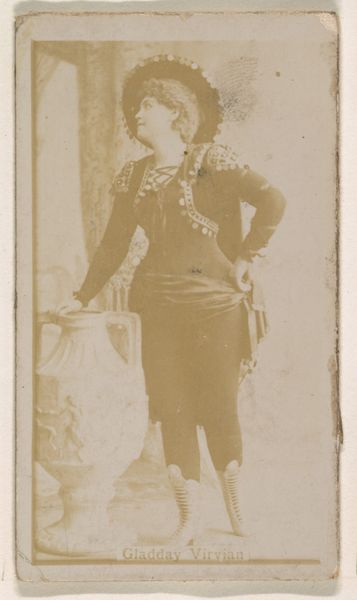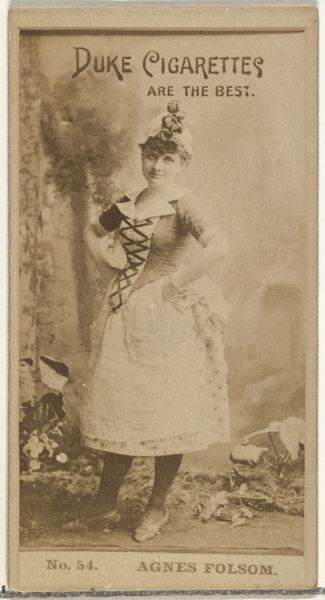
Maud Granger, from the Actresses and Celebrities series (N60, Type 2) promoting Little Beauties Cigarettes for Allen & Ginter brand tobacco products 1887
0:00
0:00
drawing, print, photography
#
portrait
#
drawing
# print
#
photography
Dimensions: Sheet: 2 3/8 × 1 1/2 in. (6 × 3.8 cm)
Copyright: Public Domain
Editor: So, this is Maud Granger, captured around 1887 by Allen & Ginter as part of their Actresses and Celebrities series. It’s a photographic print, likely for use in advertising Little Beauties Cigarettes. The sepia tone gives it a real antique feel. It seems more staged than natural. How do you see this piece fitting into the broader history of art and culture? Curator: What strikes me is the intersection of celebrity, commerce, and emerging photography in the late 19th century. Tobacco cards were a hugely popular marketing tool. Consider this image not just as a portrait, but as a deliberate construction promoting both the actress and the brand. What does Granger's poised, yet somewhat distant, expression convey to you? Editor: I guess it projects elegance and sophistication. Like, "Smoke these cigarettes if you want to be like me.” Did these cards have a democratizing effect on art? Suddenly, portraiture wasn't just for the elite. Curator: Precisely. The mass production of these images made art accessible, arguably, but also co-opted it for commercial gain. How might this democratizing effect influence public perception and the value of art? Was it art or just advertising? Editor: It muddies the waters for sure. It’s interesting how this one small card speaks to much larger issues about the role of art in society and the evolving power of advertising. I'll definitely look at other examples from that time period. Curator: Agreed. Examining the social context sheds new light on the piece and its impact beyond simple aesthetics or individual talent. I wonder, can we even truly separate art and its politics, even back then?
Comments
No comments
Be the first to comment and join the conversation on the ultimate creative platform.


